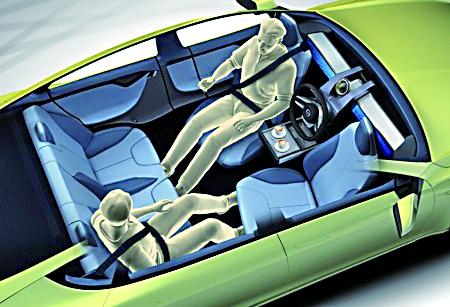Forecasting the future behaviors of dynamic actors is an important task in many robotics applications such as self-driving. It is extremely challenging as actors have latent intentions and their trajectories are governed by complex interactions between the other actors, themselves, and the maps. In this paper, we propose LaneRCNN, a graph-centric motion forecasting model. Importantly, relying on a specially designed graph encoder, we learn a local lane graph representation per actor (LaneRoI) to encode its past motions and the local map topology. We further develop an interaction module which permits efficient message passing among local graph representations within a shared global lane graph. Moreover, we parameterize the output trajectories based on lane graphs, a more amenable prediction parameterization. Our LaneRCNN captures the actor-to-actor and the actor-to-map relations in a distributed and map-aware manner. We demonstrate the effectiveness of our approach on the large-scale Argoverse Motion Forecasting Benchmark. We achieve the 1st place on the leaderboard and significantly outperform previous best results.
翻译:预测动态行为体的未来行为是许多机器人应用中的一项重要任务,例如自我驾驶。 极具挑战性, 因为行为体具有潜在意图, 其轨迹受其他行为体之间、 本身和地图之间复杂互动的制约。 在本文中, 我们提议 LaneRCNN, 一个以图形为中心的运动预测模型。 重要的是, 依靠一个特别设计的图形编码器, 我们学习了每个行为体的本地航道图代表( LaneRoI) 来编码其过去的动议和本地地图表。 我们进一步开发了一个互动模块, 允许在共享的全球航道图中, 在地方图形代表之间传递有效的信息。 此外, 我们根据航道图对输出轨迹进行参数化参数化, 一种更便于使用的参数化。 我们 LaneRCNNN 以分布式和映射式方式捕捉到行为体对行为体和行为体对映式关系。 我们展示了我们在大型Argovers运动预测基准上的方法的有效性。 我们实现了领导板上的第一个位置, 并大大超越了先前的最佳结果 。




